
What is a Roofing Nail Gun and How to Use It Safely
- 1- What is a Roofing Nail Gun?
- 2- How Does a Roofing Nail Gun Work?
- 3- Safety Tips for Using a Roofing Nail Gun
- 4- Choosing the Right Roofing Nail Gun
- 5- Maintenance and Care for Roofing Nail Guns
When it comes to roofing, efficiency and safety are paramount. One of the most important tools that help in achieving both is the roofing nail gun. This powerful tool allows roofing professionals and DIYers to install shingles quickly and securely. But, like any tool, it must be used properly to avoid accidents. In this article, we'll walk you through the basics of roofing nail guns, how to use them safely, and tips for maintenance.

Quality General Construction inc
BrocktonPlymouth CountyMassachusetts
52 Delmar Rd, Brockton, MA 02302, USA
1- What is a Roofing Nail Gun?
A roofing nail gun is a specialized tool used in roofing projects to drive nails into shingles, felt paper, and other roofing materials. It operates on compressed air, electricity, or gas, depending on the model. The roofing nail gun provides a faster, more consistent method of nailing than manual hammers, reducing the physical strain on the user and increasing efficiency on the job site.
1.1 Types of Roofing Nail Guns
There are mainly two types of roofing nail guns used for different applications:
- Pneumatic Roofing Nail Gun: Uses compressed air to drive nails and is known for its power and reliability.
- Gas-Powered Roofing Nail Gun: Runs on a mixture of gas and compressed air, making it portable and useful for areas without access to electricity or compressed air systems.
1.2 Common Uses of Roofing Nail Guns
Roofing nail guns are primarily used for installing shingles on roofs. However, they can also be used for securing underlayment, flashing, and other roofing materials, making them an essential tool for professional roofers and home improvement enthusiasts alike.
2- How Does a Roofing Nail Gun Work?
Roofing nail guns work by driving nails through roofing materials into the roof deck with speed and precision. The gun is powered by either air, gas, or electricity, which activates a spring or piston mechanism inside the tool. This mechanism forces a nail into the material, creating a secure bond that will hold up against weather and other stressors.
2.1 Loading the Nail Gun
Loading the roofing nail gun is relatively simple. First, ensure the tool is powered off. Then, load a coil or strip of nails into the magazine of the nail gun. Make sure the nails are the correct size and type for your roofing material and the gun’s specifications.
2.2 Operating the Roofing Nail Gun
Once the nail gun is loaded, it’s time to begin working. Hold the gun with both hands and position the nozzle at a slight angle towards the roof surface. When you pull the trigger, the tool will fire a nail into the roofing material. Repeat the process, ensuring that each nail is placed firmly but not too deep into the surface.
3- Safety Tips for Using a Roofing Nail Gun
Although roofing nail guns are incredibly effective, they can be dangerous if not used properly. Below are some essential safety tips to follow:
3.1 Always Wear Safety Gear
When using a roofing nail gun, always wear safety glasses, gloves, and appropriate footwear. Safety glasses will protect your eyes from flying debris, while gloves will help improve your grip and reduce the risk of injury. Sturdy shoes or boots will protect your feet from falling tools or nails.
3.2 Maintain a Firm Grip
Ensure that you have a firm grip on the gun at all times to avoid accidents, especially when using pneumatic models that can have a lot of power. A secure grip will also allow you to control the direction of the gun and prevent misfires.
3.3 Keep the Safety Lock Engaged
Most roofing nail guns come with a safety lock to prevent accidental firing. Make sure the safety lock is engaged whenever the gun is not in use, and never point the gun at yourself or others, even if the safety is on.
4- Choosing the Right Roofing Nail Gun
When selecting a roofing nail gun, it’s important to consider the type of roofing materials you’ll be working with, the size of the roofing job, and your experience level. Here are a few factors to consider:
4.1 Nail Size and Type
Different roofing materials require different nail sizes and types. Ensure that your roofing nail gun is compatible with the nails that suit your project. For example, asphalt shingles require nails with a larger head to prevent the nail from pulling through the material.
4.2 Power Source
Consider whether you need a pneumatic (air-powered), gas-powered, or electric nail gun. Pneumatic models are great for high-volume projects but require access to an air compressor. Gas-powered models offer portability, while electric models are typically lighter and easier to use for smaller jobs.
4.3 Comfort and Weight
Since roofing projects often involve extended use, it’s important to choose a nail gun that’s comfortable to hold and lightweight. Look for models with ergonomic grips and balanced designs to reduce fatigue.
5- Maintenance and Care for Roofing Nail Guns
Proper maintenance ensures that your roofing nail gun performs efficiently and lasts for years. Follow these basic maintenance tips:
5.1 Regular Cleaning
After each use, clean the nail gun to prevent the buildup of dust and debris. This can affect its performance and cause jams. Use a soft cloth to wipe the exterior and a brush to clean out the magazine and air ports.
5.2 Lubrication
Lubricate the moving parts of the nail gun regularly to ensure smooth operation. Use a recommended lubricant as per the manufacturer’s instructions.
5.3 Inspect and Replace Parts
Inspect the gun for any wear and tear, including the trigger, safety mechanism, and magazine. Replace worn-out parts immediately to avoid malfunction or damage during use.
In conclusion, roofing nail guns are invaluable tools for anyone involved in roofing projects. They make the job faster, more efficient, and less physically demanding. By understanding how to use these tools safely, choosing the right model, and maintaining them properly, you can ensure successful and safe roofing installations. For expert advice and top-quality roofing products, visit BeachCo Roofing Hub!



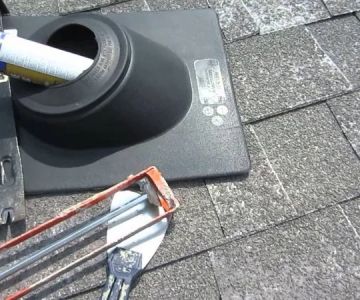
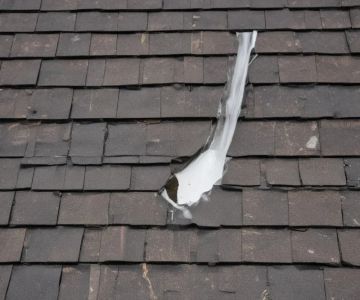

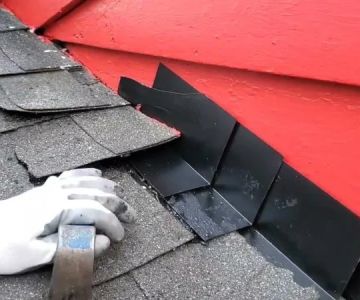

 C&K Roofing & General Contracting Inc4.0 (139 reviews)
C&K Roofing & General Contracting Inc4.0 (139 reviews)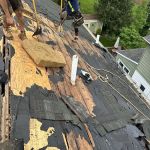 Tony & Sons Construction LLC0.0 (0 reviews)
Tony & Sons Construction LLC0.0 (0 reviews) Tri-County Construction & Roofing5.0 (10 reviews)
Tri-County Construction & Roofing5.0 (10 reviews) Wicked Good Roofing5.0 (10 reviews)
Wicked Good Roofing5.0 (10 reviews) David Barbale | Auburn Roofing Contractors5.0 (51 reviews)
David Barbale | Auburn Roofing Contractors5.0 (51 reviews) Emmanuel Construction5.0 (1 reviews)
Emmanuel Construction5.0 (1 reviews) Skylight Leak Repair: Common Causes and How to Waterproof Your Skylight
Skylight Leak Repair: Common Causes and How to Waterproof Your Skylight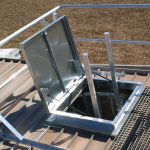 How to Install a Roof Access Hatch for Easy Attic Entry – Step-by-Step Guide
How to Install a Roof Access Hatch for Easy Attic Entry – Step-by-Step Guide What is a Roof Deck and How to Repair or Reinforce It
What is a Roof Deck and How to Repair or Reinforce It What is a Roofing Project Closeout Package? Essential Documents You Should Receive
What is a Roofing Project Closeout Package? Essential Documents You Should Receive What is a Roofing Material Sustainability Certification? (e.g., LEED, Cool Roof)
What is a Roofing Material Sustainability Certification? (e.g., LEED, Cool Roof) How to Repair a Roof Leak in a Building with a Fabric Tensile Roof Structure
How to Repair a Roof Leak in a Building with a Fabric Tensile Roof Structure